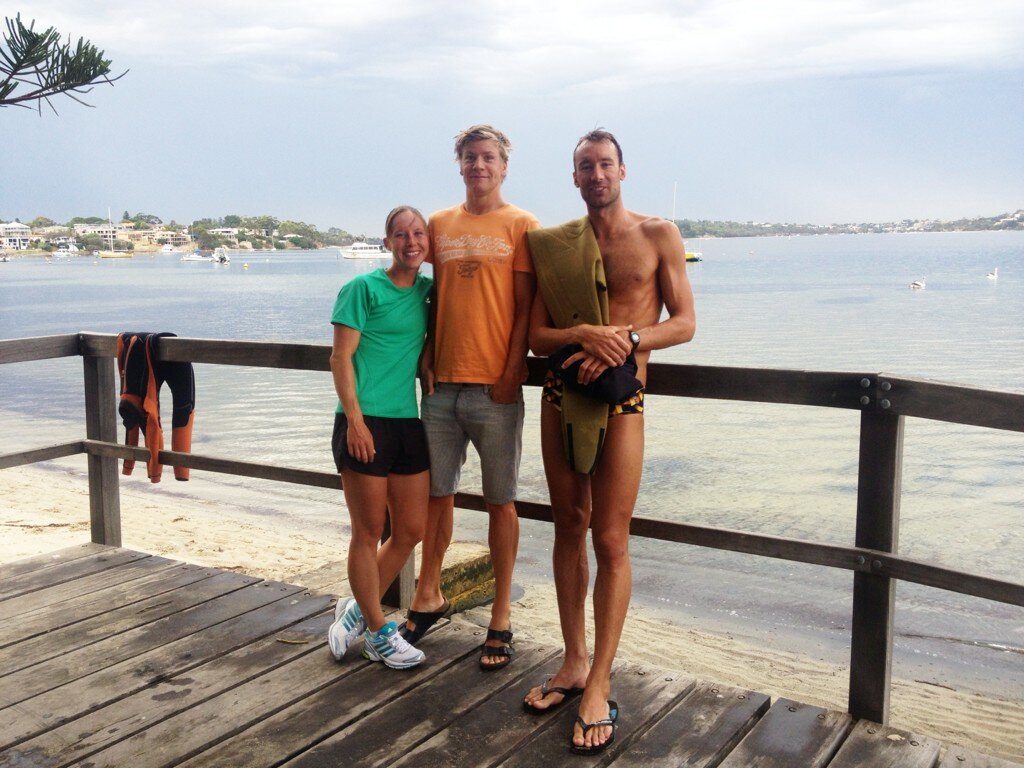1) Reduce your drag so you slip through the water more easily
2) Improve your propulsive technique so you are pushed further on every stroke
3) Artificially elongate your stroke by adding a pause-and-glide
The first two are excellent ways to improve your swimming speed and efficiency. However the third only makes you slower and less efficient as you slow down between strokes and then have to re-accelerate on the next stroke. This is doubly the case in open water swimming where waves and chop slow you down even more during the deadspot in your timing.
Letting The Tail Wag Your Swimming Dog
Within our Swim Types system, an Overglider is a swimmer who has added a distinct pause-and-glide into their stroke to try and make their stroke as long as possible. If you're an Overglider you're probably an intelligent and diligent swimmer who likes to use a thoughtful approach to swimming. You have likely read on the internet or in books that gliding as far as possible after each stroke is what defines a great swimmer.
Taking fewer than 40 strokes per 50m is often held up as a benchmark where true swimming efficiency begins, however this disregards the achievements of Olympic medallists such as Janet Evans, Laure Manadou, Lotte Friis and David Davies who take between 42 and 55 strokes per 50m. It also ignores the fact that nearly all elite triathletes and open water swimmers use a shorter punchier stroke style to give them great speed and efficiency.
 |
| If you are aiming for a long stroke style be very careful not to create it by adding a pause-and-glide into your timing. |
Equating stroke length to efficiency is a gross oversimplification of the truth because any swimmer can lengthen their stroke by gliding but will harm their efficiency by doing so. If you've added a pause-and-glide into your own stroke you'll know this is the case as you will have hit a plateau that you cannot get off. You may also have had the experience of getting slower and slower as you try and lengthen out your stroke more and more. Gliding has taken you down a cul-de-sac with your stroke and the only way out is to bite the bullet and remove the deadspot to create a more continuous rhythmical stroke.
"Putting On The Brakes"
Overgliders have a strong tendency to unwittingly drop their wrist and show the palm forwards at the front of the stroke, something we term "putting on the brakes". Pushing against the water in this way creates a lot of drag and also harms the catch that follows by dropping the elbow lower than the wrist before the catch has begun:
While Overgliders are not normally aware they are showing the palm forwards, pressing against the water's resistance in this way helps pause the stroke at the front which is something they are deliberately trying to do in order to glide. Many view this period as an opportunity to "rest between strokes" but given that water is 800 times more dense than air, all they're actually doing is decelerating.
In the correct position with the elbow slightly higher than the wrist and the wrist higher than the fingertips it is difficult to pause and glide as the catch wants to initiate itself as soon as full extension is achieved:
This fundamental link between gliding and a poor catch is one of the reasons Swim Smooth are so opposed to teaching any swimmer to pause and glide, even beginners learning the freestyle stroke. It also explains why improving the catch is critical to help any Overglider remove the deadspot from their stroke timing.
Right Can Feel Wrong
If you are a recovering Overglider you may have tried to develop a better catch technique but found it difficult to do. By swimming with the palm facing forwards at the front of the stroke you are used to feeling the water pressure on the palm of your hand and might be misinterpreting that feeling as a good catch. By correcting your hand position you will actually feel less pressure on the palm which can feel "wrong" and like you're "slipping the water".
Our Catch Masterclass DVD is our dedicated coaching program to improve your catch technique (and so remove the deadspots from your stroke timing). It's the perfect development program for Overgliders, containing all of Swim Smooth's visualisations, drills and methods to improve the key thing holding you back in the water - your propulsive efficiency.
 |
| Our Catch Masterclass DVD lets you study Jono Van Hazel's catch technique underwater - shot using our fantastic HD filming rig in Perth. |



























